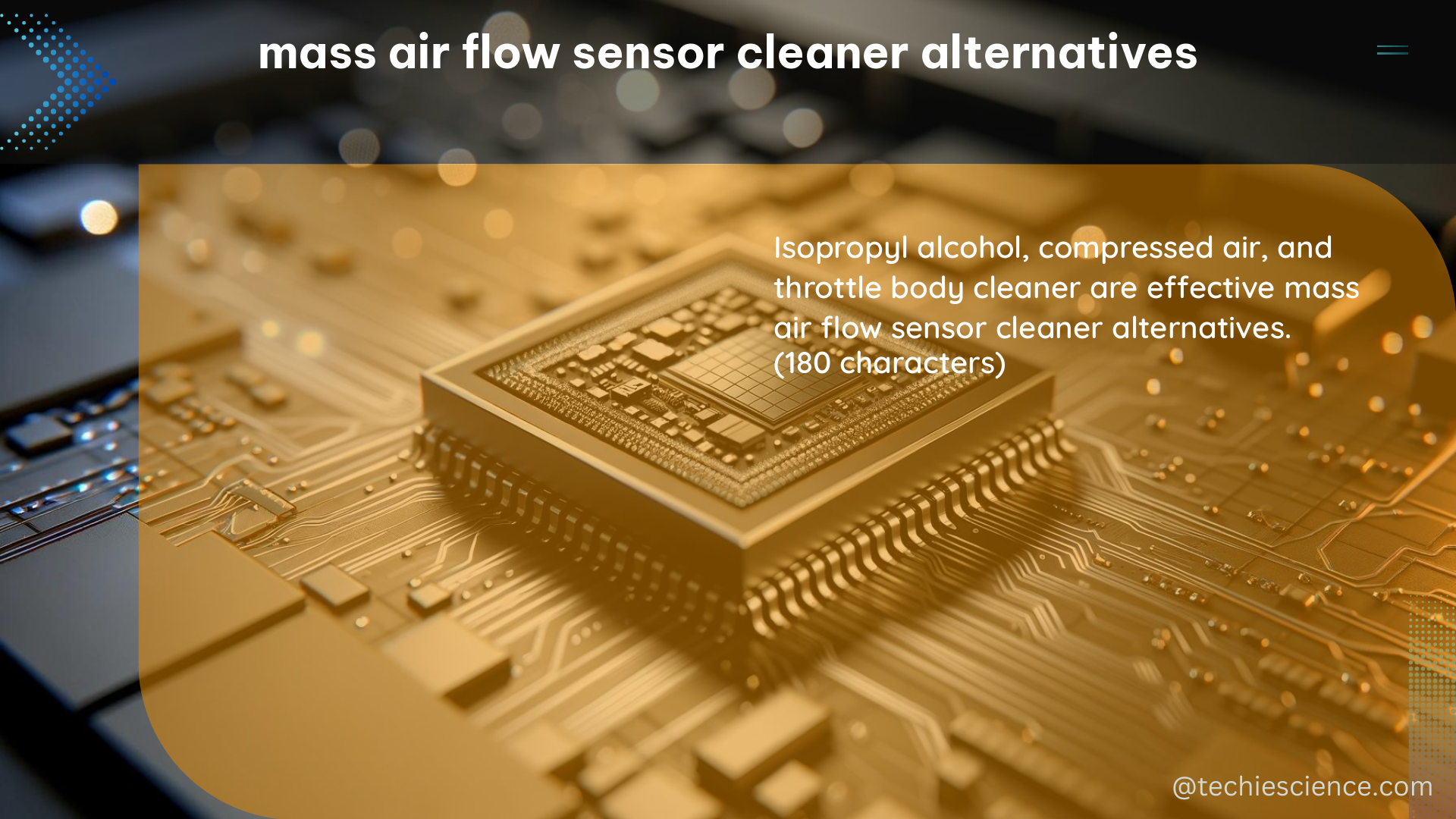Mass air flow (MAF) sensors are critical components in modern vehicle engine management systems, responsible for measuring the amount of air entering the engine. Proper maintenance and cleaning of these sensors are essential for optimal engine performance and fuel efficiency. However, in some cases, dedicated MAF sensor cleaners may not be readily available or accessible. In such situations, there are several alternative cleaning solutions that can be considered, each with its own advantages and precautions.
Acetone: A Powerful Solvent
One alternative suggested by Reddit users is the use of acetone, a common solvent found in hardware stores. Acetone is known for its ability to dissolve oils and grime, making it a potential option for cleaning MAF sensors. However, it is crucial to exercise extreme caution when using acetone, as it is highly flammable and can potentially damage sensitive electronic components if not used properly.
When using acetone, it is recommended to:
– Disconnect the battery before removing the MAF sensor to avoid any electrical issues.
– Spray the acetone from a distance of at least 12 inches (30 cm) to avoid direct contact with the sensor.
– Allow the sensor to air dry for a minimum of 30 minutes before reinstalling and reconnecting the battery.
– Ensure the work area is well-ventilated and free from any open flames or ignition sources.
Throttle Body Cleaner: A Versatile Option

Another alternative mentioned in the Reddit thread is the use of throttle body cleaner, a product designed to clean sensitive electrical components in the engine. Throttle body cleaners are typically available at auto parts stores and are safe for use on plastics, making them a suitable choice for cleaning MAF sensors.
The key benefits of using throttle body cleaner include:
– Effective at removing oils, grime, and other contaminants from the MAF sensor.
– Dries quickly, reducing the risk of moisture-related issues.
– Safe for use on plastic and electronic components.
When using throttle body cleaner, it is important to follow the same precautions as with acetone, such as disconnecting the battery and allowing the sensor to air dry before reinstallation.
Electronic Cleaner: A Specialized Approach
Electronic cleaners, such as the CRC QD Electronic Cleaner, are another alternative that can be used to clean MAF sensors. These specialized products are designed for use on sensitive electronic components and are available at stores like Altex, Radio Shack, and some Office Depot locations.
It is crucial to note that not all electronic cleaners are suitable for use on MAF sensors, so it is essential to choose a product that is specifically formulated for this purpose. The key advantages of using an electronic cleaner include:
– Formulated to be safe for use on electronic components.
– Effectively removes contaminants without damaging the sensor.
– Dries quickly, reducing the risk of moisture-related issues.
As with the other alternatives, it is important to disconnect the battery, spray the cleaner from a distance, and allow the sensor to air dry before reinstallation.
Isopropyl Alcohol: A Versatile Cleaning Solution
Isopropyl alcohol, commonly known as rubbing alcohol, is another alternative that can be used to clean MAF sensors. This product is widely available at most drugstores and is safe for use on plastics.
When using isopropyl alcohol, it is important to:
– Use a high-percentage solution, such as 99% isopropyl alcohol, to ensure effective cleaning.
– Disconnect the battery before removing the MAF sensor.
– Spray the alcohol from a distance of at least 12 inches (30 cm) to avoid direct contact with the sensor.
– Allow the sensor to air dry for a minimum of 30 minutes before reinstallation.
Isopropyl alcohol is a versatile cleaning solution that can effectively remove oils, grime, and other contaminants from the MAF sensor without the risk of damage associated with more aggressive solvents.
Best Practices for Using Alternatives
Regardless of the alternative cleaning solution chosen, it is essential to follow best practices to avoid damaging the MAF sensor. These include:
- Disconnect the battery before removing the sensor to prevent any electrical issues.
- Spray the cleaner from a distance of at least 12 inches (30 cm) to avoid direct contact with the sensor.
- Allow the sensor to air dry for a minimum of 30 minutes before reinstallation.
- Reconnect the battery and plug the sensor back in, ensuring a secure connection.
- Clear any diagnostic trouble codes that may have been set during the cleaning process.
It is important to note that while these alternatives can be effective in cleaning MAF sensors, they may not be as efficient as a dedicated MAF sensor cleaner. Therefore, it is recommended to use these alternatives only when a dedicated cleaner is not available or accessible.
Conclusion
In summary, when faced with the unavailability of a dedicated MAF sensor cleaner, there are several alternative cleaning solutions that can be considered, including acetone, throttle body cleaner, electronic cleaner, and isopropyl alcohol. Each of these options has its own advantages and precautions, and it is essential to follow best practices to avoid damaging the sensitive MAF sensor.
By understanding the proper use of these alternatives and adhering to safety guidelines, vehicle owners and DIY mechanics can effectively maintain and clean their MAF sensors, ensuring optimal engine performance and fuel efficiency.
References:
- Reddit Thread on MAF Sensor Cleaner Alternatives
- Bob Is The Oil Guy Forum Discussion on Cleaning the MAF Sensor
- YouTube Video on Cleaning the MAF Sensor

The lambdageeks.com Core SME Team is a group of experienced subject matter experts from diverse scientific and technical fields including Physics, Chemistry, Technology,Electronics & Electrical Engineering, Automotive, Mechanical Engineering. Our team collaborates to create high-quality, well-researched articles on a wide range of science and technology topics for the lambdageeks.com website.
All Our Senior SME are having more than 7 Years of experience in the respective fields . They are either Working Industry Professionals or assocaited With different Universities. Refer Our Authors Page to get to know About our Core SMEs.